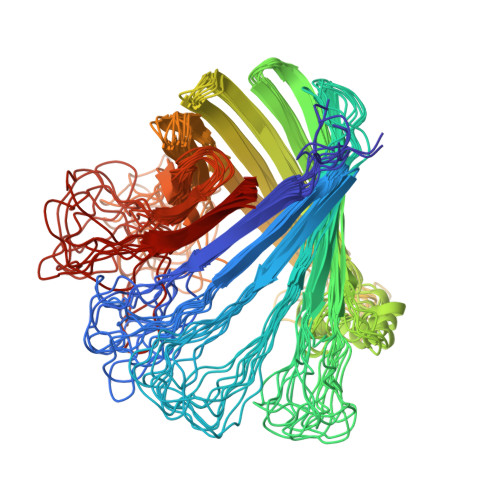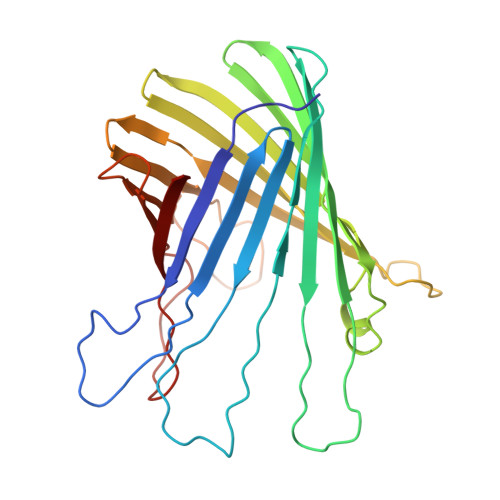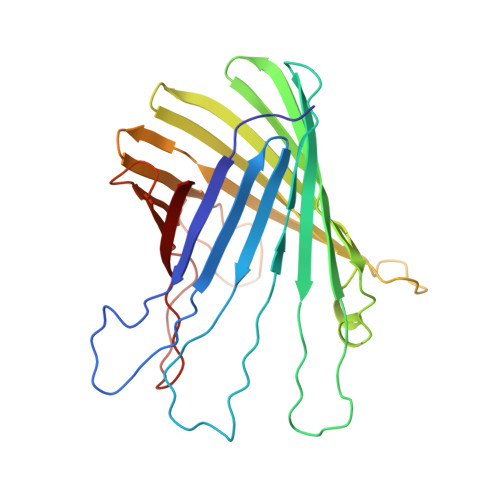Quiet Outer Membrane Protein G (OmpG) Nanopore for Biosensing.
Sanganna Gari, R.R., Seelheim, P., Liang, B., Tamm, L.K.(2019) ACS Sens 4: 1230-1235
- PubMed: 30990011
- DOI: https://doi.org/10.1021/acssensors.8b01645
- Primary Citation of Related Structures:
6OQH - PubMed Abstract:
Interest in nanopore technology has been growing due to nanopores' unique capabilities in small molecule sensing, measurement of protein folding, and low-cost DNA and RNA sequencing. The E. coli β-barrel outer membrane protein OmpG is an excellent alternative to other protein nanopores because of its single polypeptide chain. However, the flexibility of its extracellular loops ultimately limits applications in traditional biosensing. We deleted several residues in and near loop 6 of OmpG. The dynamic structure of the new construct determined by NMR shows that loops 1, 2, 6, and 7 have reduced flexibilities compared to those of wild-type. Electrophysiological measurements show that the new design virtually eliminates flickering between open and closed states across a wide pH range. Modification of the pore lumen with a copper chelating moiety facilitates detection of small molecules. As proof of concept, we demonstrate concurrent single-molecule biosensing of glutamate and adenosine triphosphate.
Organizational Affiliation:
Department of Molecular Physiology and Biological Physics , Center for Cell and Membrane Physiology at the University of Virginia , Charlottesville , Virginia 22908 , United States.


















